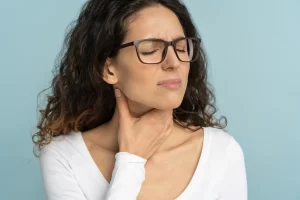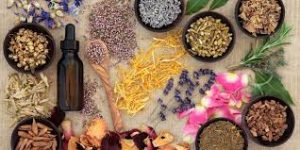Breakthrough New Treatment for Achalasia in 2025: Latest Achalasia Solution Revealed

Achalasia, a rare and chronic esophageal motility disorder, has long posed challenges to both patients and physicians. For decades, treatments have largely revolved around symptom management offering only temporary relief with limited long-term efficacy. However, in 2025, a breakthrough new treatment for achalasia is making headlines in the medical community. This revolutionary approach not only targets the root cause of the disease but also combines cutting-edge techniques with natural remedies, including the promising rise of herbal treatment for achalasia.
The most recent advancements, from high-tech surgical procedures to innovative herbal approaches, shedding light on how achalasia treatment has evolved and what patients can expect moving forward.
Related Article: How I Cured My Achalasia With Herbal Remedies And Natural Treatment
What is Achalasia?
Achalasia is a rare but serious esophageal disorder that affects the ability of the esophagus to move food into the stomach. It occurs when the lower esophageal sphincter (LES) a muscular ring at the junction of the esophagus and stomach—fails to relax properly during swallowing. Additionally, the muscles of the esophagus (peristalsis) lose their ability to push food downward. This leads to difficulty swallowing, regurgitation, and sometimes severe chest pain.
Although achalasia is not life-threatening in itself, it can significantly impact a person’s quality of life and lead to complications such as malnutrition, weight loss, and aspiration pneumonia if left untreated. This article provides a comprehensive overview of achalasia, including its causes, symptoms, diagnosis, and treatment options.

Causes of Achalasia
The exact cause of achalasia remains unknown, but researchers believe it results from damage to the nerves in the esophagus, particularly the inhibitory neurons that signal the LES to relax. Several factors may contribute to this nerve damage:
1. Autoimmune Response
Some studies suggest that achalasia may be triggered by an autoimmune reaction where the body’s immune system mistakenly attacks the nerve cells in the esophagus. This theory is supported by the presence of specific antibodies in some achalasia patients.
2. Viral Infections
Certain viruses, such as the herpes simplex virus or measles, have been linked to the development of achalasia. These infections may damage the esophageal nerves, leading to impaired function.
3. Genetic Factors
Although rare, some cases of achalasia appear to run in families, suggesting a possible genetic predisposition.
4. Degeneration of Esophageal Nerves
Achalasia may also result from the gradual degeneration of the nerves in the esophagus (Auerbach’s plexus), which control muscle contractions.
5. Secondary Achalasia (Pseudoachalasia)
In rare cases, achalasia-like symptoms can be caused by other conditions, such as:
- Chagas disease(caused by the parasite Trypanosoma cruzi)
- Esophageal cancer
- Tumors near the esophagus
Symptoms of Achalasia
The symptoms of achalasia develop gradually and worsen over time. The most common signs include:
1. Dysphagia (Difficulty Swallowing)
The primary symptom of achalasia is difficulty swallowing both solids and liquids. Patients often describe a sensation of food “getting stuck” in the chest.
2. Regurgitation
Undigested food or saliva may flow back into the throat, especially when lying down or bending over. This can lead to choking or aspiration (food entering the lungs).
3. Chest Pain
Some individuals experience chest pain due to esophageal spasms or food retention in the esophagus. This pain can mimic heart-related conditions like angina.
4. Weight Loss and Malnutrition
Because eating becomes difficult, many patients unintentionally lose weight and may develop nutritional deficiencies.
5. Heartburn and Acid Reflux
Although achalasia is not caused by acid reflux, some patients experience heartburn due to food fermentation in the esophagus.
6. Nocturnal Coughing or Pneumonia
If regurgitated food enters the lungs, it can cause coughing, especially at night, and increase the risk of aspiration pneumonia.
Related Article: Difficult To Swallowing Food: Strategies For Improving Eating Ability
Diagnosis of Achalasia
Since achalasia symptoms overlap with other esophageal disorders (such as GERD or esophageal cancer), proper diagnosis requires specialized tests:
1. Esophageal Manometry
This is the gold standard for diagnosing achalasia. A thin tube is inserted through the nose into the esophagus to measure muscle contractions and LES pressure. In achalasia, the test typically shows:
- Failure of the LES to relax
- Absent or weak esophageal peristalsis
2. Barium Swallow (Esophagram)
The patient swallows a barium solution, and X-rays track its movement. Achalasia often shows:
- “Bird’s beak” narrowingat the LES
- Dilated esophagusabove the blockage
3. Endoscopy (EGD)
A flexible tube with a camera examines the esophagus and stomach to rule out cancer or strictures.
4. Functional Lumen Imaging Probe (FLIP)
A newer technique that measures esophageal distensibility and sphincter function.
While rare, achalasia severely impacts quality of life. Until recently, most treatments like pneumatic dilation, Heller myotomy, or botulinum toxin injections offered only symptomatic relief. But thanks to ongoing research, new treatments for achalasia in 2025 now promise improved outcomes.
Traditional Treatment Limitations
Before diving into the newest developments, it’s important to understand the limitations of conventional achalasia treatments:
1. Pneumatic Dilation
Pneumatic dilation is one of the most widely used non-surgical treatments for achalasia, a rare disorder where the lower esophageal sphincter (LES) fails to relax properly, making it hard for food and liquids to pass into the stomach.
What Is Pneumatic Dilation?
Pneumatic dilation (also called balloon dilation) involves inserting a balloon into the esophagus and inflating it at the level of the LES. The pressure from the inflated balloon stretches and tears the muscle fibers of the sphincter, helping it to relax and allowing food to pass more easily.
How Is the Procedure Done?
- Preparation: The patient usually fasts overnight before the procedure.
- Sedation: Mild sedation or general anesthesia is given to keep the patient comfortable.
- Balloon Insertion: A deflated balloon is passed through the mouth and into the esophagus using an endoscope or fluoroscopic guidance.
- Inflation: Once in place at the LES, the balloon is slowly inflated to stretch the sphincter muscle.
- Deflation and Removal: The balloon is then deflated and removed.
The entire process typically takes about 30 to 45 minutes, and most patients go home the same day.
Effectiveness
Pneumatic dilation has a success rate of 60% to 90%, especially in patients with type II achalasia (as defined by high-resolution manometry). The relief from symptoms such as dysphagia (difficulty swallowing) can last for several years.
Repeat Treatments
Some patients may require multiple dilations over time to maintain symptom relief. A common approach is to start with a smaller balloon (e.g., 30 mm) and increase size in subsequent sessions if needed.
Related Article: Feeling Of Stomach Being Empty Exploring The Benefits Of Wellness
2. Botox Injections
Botulinum toxin injections offer temporary relief by relaxing the LES muscles. However, their effect diminishes within months, and repeated injections may become less effective.
What is Botox Injections?
Botox Injections are a popular cosmetic and medical treatment that uses a purified form of botulinum toxin type A to temporarily relax muscles, reducing wrinkles and treating certain medical conditions.
How Botox Works
- Botox blocks nerve signals to the injected muscles, preventing them from contracting.
- This relaxation smooths out wrinkles caused by repetitive facial expressions (like frown lines, crow’s feet, and forehead lines).
- Results typically appear within 3–7 daysand last 3–6 months, after which muscle action gradually returns.
Common Cosmetic Uses
- Forehead lines(horizontal wrinkles)
- Glabellar lines(frown lines between eyebrows)
- Crow’s feet(wrinkles around the eyes)
- Bunny lines(nose wrinkles)
- Lip lines(smoker’s lines)
- Neck bands(platysmal bands)
- Jaw slimming(masseter reduction for a V-shaped face)
Medical Uses
- Chronic migraines(reduces headache frequency)
- Excessive sweating (hyperhidrosis)(underarms, palms, feet)
- Muscle spasms(cervical dystonia, blepharospasm)
- Overactive bladder
- Strabismus(crossed eyes)
- TMJ disorders(jaw tension relief)
Procedure & Safety
- Quick & minimally invasive(takes 10–30 minutes).
- Temporary side effectsmay include mild swelling, bruising, or headache.
- Rare risks: Drooping eyelids (if injected incorrectly), flu-like symptoms.
- Not recommendedfor pregnant women or people with neuromuscular disorders.
3. Heller Myotomy
This surgical procedure cuts the muscles of the LES, allowing easier passage of food. Although effective, it comes with risks like acid reflux and the need for general anesthesia.
What is Heller Myotomy?
A Heller myotomy is a surgical procedure used to treat achalasia, a disorder in which the lower esophageal sphincter (LES) fails to relax properly, making it difficult for food and liquids to pass into the stomach.
Key Aspects of Heller Myotomy:
Purpose:
- To relieve symptoms of achalasia, such as difficulty swallowing (dysphagia), regurgitation, chest pain, and weight loss.
- The procedure cuts the tight muscles of the LES to allow food to move more easily into the stomach.
Procedure:
- Laparoscopic approach (most common): Small incisions are made in the abdomen, and a camera and surgical instruments are used to perform the myotomy.
- Open surgery (rare): A larger abdominal incision may be used in complex cases.
- Peroral Endoscopic Myotomy (POEM): A newer, less invasive endoscopic technique where the myotomy is done through the mouth without external incisions.
Combination with Fundoplication:
- Often, a partial fundoplication(wrapping part of the stomach around the esophagus) is performed to prevent reflux (GERD) after the myotomy.
Recovery & Outcomes:
- Hospital stay: Usually 1–2 days for laparoscopic surgery.
- Diet: Starts with liquids, gradually advancing to solid foods.
- Success rate: High (85–95% of patients experience improved swallowing).
Potential Risks & Complications:
- Gastroesophageal reflux (GERD)
- Perforation of the esophagus or stomach
- Infection or bleeding
- Recurrence of symptoms (rare)
4. POEM (Peroral Endoscopic Myotomy)
A newer, less invasive endoscopic technique, POEM has shown good results. Yet it still doesn’t address the underlying causes, and post-treatment reflux is common.
The medical field has long awaited a solution that not only relieves symptoms but restores natural esophageal function. In 2025, such hope is becoming a reality.
What is POEM?
POEM (Peroral Endoscopic Myotomy) is a minimally invasive endoscopic procedure used to treat swallowing disorders, primarily achalasia, a condition where the lower esophageal sphincter (LES) fails to relax properly, causing difficulty swallowing (dysphagia), regurgitation, and chest pain.
Key Features of POEM:
- Minimally Invasive– Performed entirely through the mouth using an endoscope, without external incisions.
- Endoscopic Technique– Uses a flexible endoscope with a small camera and specialized tools.
- Myotomy– Involves cutting the muscle layers of the esophagus and LES to relieve obstruction and improve swallowing.
Steps of the POEM Procedure:
- Mucosal Incision– A small cut is made inside the esophagus to access the muscle layer.
- Submucosal Tunnel Creation– A tunnel is formed between the inner lining and muscle layer down to the stomach.
- Myotomy (Muscle Cutting)– The inner circular muscles of the esophagus and LES are carefully cut to reduce pressure.
- Closure– The initial mucosal incision is sealed with clips or sutures.
Advantages of POEM:
- Highly effective(success rates >90% for achalasia).
- Shorter recoverycompared to traditional surgery (e.g., laparoscopic Heller myotomy).
- No external scars(performed entirely through the mouth).
- Can treat other spastic esophageal disorders(e.g., diffuse esophageal spasm, jackhammer esophagus).
Potential Risks/Complications:
- Mucosal injury or perforation(rare, usually managed during the procedure).
- Gastroesophageal reflux (GERD)– Some patients may require acid-reducing medications afterward.
- Bleeding or infection(uncommon).
The Breakthrough: New Treatment for Achalasia in 2025
Researchers and clinicians worldwide have been trialing a multi-pronged treatment strategy that merges modern innovation with traditional wisdom. This new treatment for achalasia includes:
1. Bioelectronic Therapy: Restoring Neuromuscular Function
One of the most promising developments is bioelectronic therapy. Unlike traditional treatments that target the muscles, this method focuses on the nervous control of the esophagus.
- How It Works: Small bioelectronic devices are implanted near the LES. These devices deliver electrical impulses to stimulate esophageal nerves and restore normal muscle contractions.
- Clinical Trials in 2025: Trials have shown a 78% improvement in swallowing and a significant reduction in regurgitation episodes. Patients report sustained results for over a year without additional procedures.
2. Gene Editing Therapies
For patients with genetically linked achalasia, CRISPR-Cas9-based therapies are now under advanced study. These therapies aim to correct mutations in genes responsible for neuronal signaling in the esophagus.
- While still in controlled settings, early 2025 results show promise for long-term resolution of achalasia symptoms in a small group of patients.
3. Regenerative Stem Cell Therapy
Stem cell treatments have become a hot topic in gastroenterology. In 2025, researchers have developed esophageal neuron regeneration protocols using induced pluripotent stem cells (iPSCs).
- Goal: To regenerate the lost ganglion cells of the esophageal myenteric plexus.
- Benefits: Potential permanent restoration of nerve function rather than symptomatic management.
- Challenge: Widespread application remains limited due to cost and availability, but results are highly encouraging.
4. AI-Guided Personalized Treatment Plans
Artificial intelligence has played a key role in the diagnosis and treatment customization for achalasia. In 2025, AI-based platforms help physicians design tailored treatment regimens, predicting which combination (e.g., surgery, herbal therapy, lifestyle changes) will work best for each individual.
Related Article: Cancer Of The Esophagus Or Upper Stomach Join The Fight Against
The Rise of Natural Remedies: Herbal Treatment for Achalasia
While high-tech treatments dominate headlines, 2025 also sees a resurgence of interest in herbal treatment for achalasia. These remedies target inflammation, improve nerve health, and assist in smooth muscle relaxation.

1. Ashwagandha (Withania somnifera)
- Benefit: Supports nervous system repair and reduces stress-related symptoms that may worsen achalasia.
- 2025 Studies: A double-blind trial showed improved esophageal coordination in 36% of patients taking ashwagandha supplements daily for 12 weeks.
2. Licorice Root (Glycyrrhiza glabra)
- Function: Soothes esophageal lining, reduces acid reflux (a common side effect of POEM or myotomy), and acts as an anti-inflammatory.
- Form: Available as tea, capsules, and lozenges.
3. Slippery Elm Bark (Ulmus rubra)
- Known for its mucilage content, it coats the digestive tract and reduces irritation during swallowing.
4. Valerian Root
- Promotes smooth muscle relaxation and may reduce LES tension, particularly beneficial for functional esophageal disorders.
- Bacopa Monnieri (Brahmi)
- Used in Ayurveda for neurodegenerative conditions, this herb may support nerve regeneration in the esophagus.
While herbal treatment for achalasia isn’t a standalone cure, it complements modern therapies. Many patients in 2025 opt for integrative protocols combining herbal supplements with procedures like bioelectronic stimulation for optimal results.
Dietary and Lifestyle Recommendations in 2025
Whether undergoing surgery, electrical stimulation, or natural therapies, certain lifestyle habits are crucial in managing achalasia effectively:
1. Meal Timing and Posture
- Eat smaller, frequent meals.
- Remain upright for at least 30 minutes after eating.
2. Hydration During Meals
- Sip warm water or herbal teas during meals to help food pass more smoothly through the esophagus.
- Avoid Irritants
- Eliminate caffeine, alcohol, spicy foods, and carbonated beverages which can worsen esophageal symptoms.
- Mind-Body Techniques
- Stress can exacerbate achalasia. Practices such as yoga, meditation, and breathing exercises have shown improved outcomes in several patients when added to conventional therapies.
Related Article: Achalasia: Read The Overall Information About The Neurological Disorder
What the Future Holds for Achalasia Treatment
With rapid progress in both medical and natural sciences, the landscape for achalasia treatment has dramatically improved in 2025. The New Treatment for Achalasia focuses not just on muscle or sphincter manipulation but aims to restore normal esophageal neuromuscular function holistically.
We expect:
- Greater integration of herbal and pharmaceutical approaches.
- Improved early diagnosis with AI and biomarkers.
- Gene-targeted therapies to move from clinical trials to broader access.
- Global awareness campaigns promoting early screening and integrative care.
Conclusion
2025 marks a revolutionary year in the treatment of achalasia. From the advent of bioelectronic therapy and stem cell regeneration to the growing validation of herbal treatment for achalasia, patients now have access to solutions once deemed impossible.
For those living with the physical and emotional toll of this rare disease, the future has never looked brighter. Whether you’re exploring high-tech innovations or seeking a natural healing path, today’s options offer renewed hope, improved quality of life, and a clear path toward long-term relief.
Related Article: Esophageal Achalasia Diet: 10 Life-Changing Foods That Make Swallowing Easier




